Imagine stepping into your garden, where a vibrant tapestry of blooms greets you with a burst of color and fragrance, enticing all your senses to dance with delight. Whether you’re a seasoned gardener or just beginning your horticultural journey, creating a flower garden is a deeply rewarding endeavor that invites nature’s beauty right into your life.
Growing a beautiful flower garden is more than just an aesthetic pursuit; it’s an opportunity to nurture life and cultivate a personal oasis that reflects your unique style and spirit. In this article, we’ll explore everything from selecting the right flowers for your climate to mastering the techniques of soil preparation, planting, and ongoing care, ensuring your garden thrives throughout the seasons.
Every gardener, whether novice or expert, will find inspiring tips and practical advice tailored to elevate your gardening experience. Together, we’ll delve into the nuances of plant pairing and discover how to create harmonious color palettes that transform your garden into a visual masterpiece. Join us as we embark on this floral adventure, where each petal and leaf speaks to the joy and satisfaction that only a garden can provide.
Select Vibrant Flower Varieties
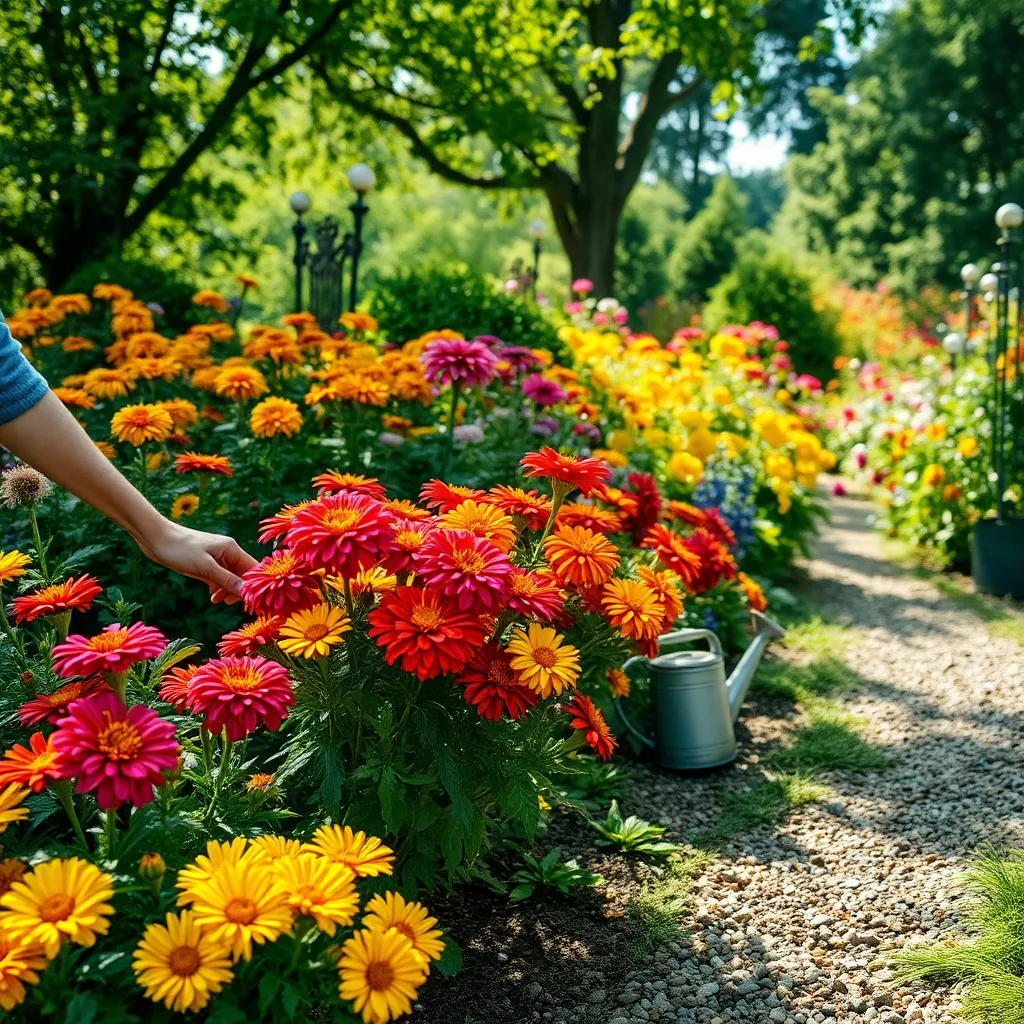
When selecting vibrant flower varieties for your garden, it’s essential to consider both color and bloom time. Choose a mix of annuals and perennials to ensure a continuous display of color throughout the growing season.
Sunlight requirements play a crucial role in the success of your flowers. For sunny spots, consider vibrant options like zinnias and marigolds, which thrive in full sun and are relatively low-maintenance.
For shaded areas, impatiens and begonias can provide vibrant pops of color without needing direct sunlight. These plants prefer moist, well-drained soil and benefit from regular watering to keep their blooms lush and healthy.
Experienced gardeners might want to experiment with layering plants by height to add depth and interest to their flower beds. Taller plants like delphiniums can create a stunning backdrop, while ground covers such as creeping phlox can fill in gaps and suppress weeds.
Prepare Well-Drained Soil
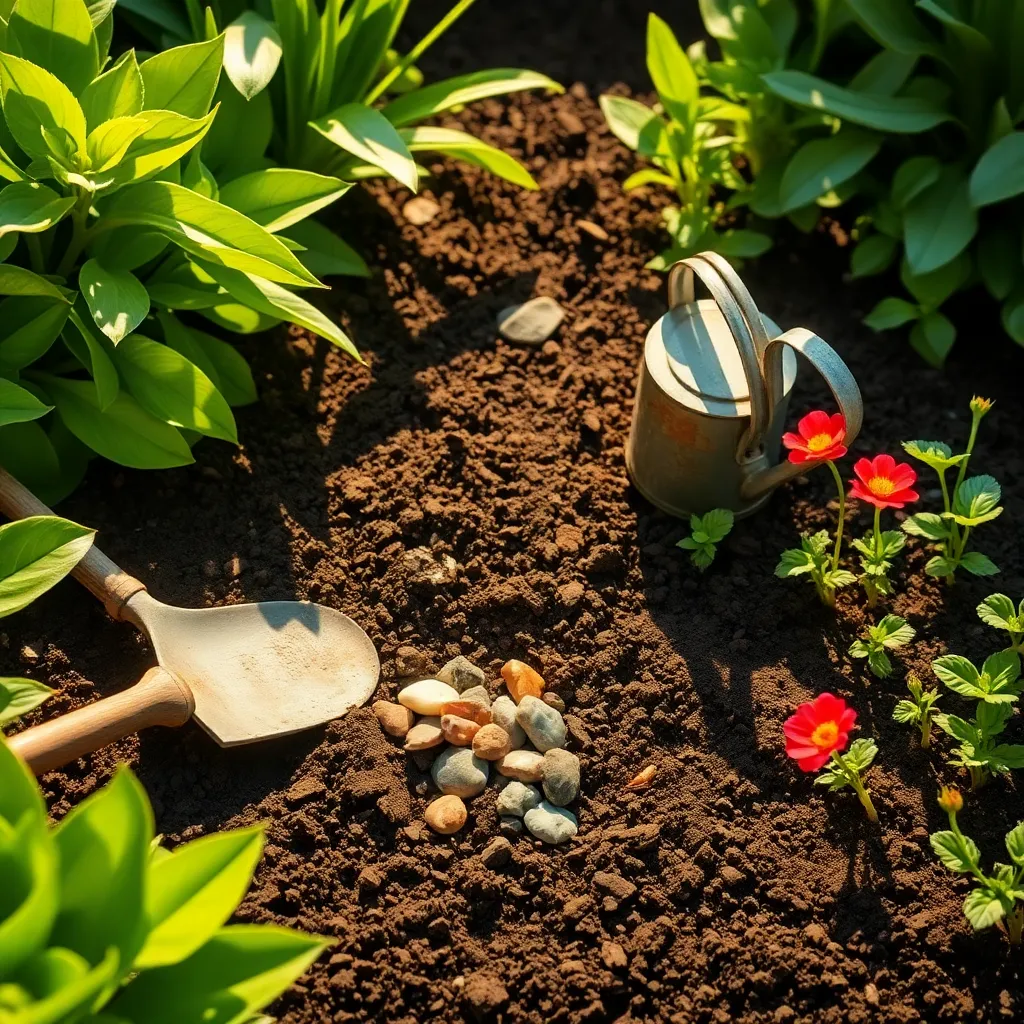
Creating well-drained soil is essential for a thriving flower garden and helps prevent root rot and other moisture-related issues. Start by testing your soil’s drainage by digging a hole about 12 inches deep, filling it with water, and timing how long it takes to drain; ideally, it should empty within 24 hours.
Improving soil drainage can be done by amending it with organic matter such as compost or well-rotted manure. These materials help enhance soil structure, allowing water to move freely while also providing essential nutrients for your plants.
Another effective method is to incorporate coarse sand or perlite into heavy clay soils, which improves permeability. When mixing these materials into the soil, aim for a balanced texture that holds moisture without becoming waterlogged.
For those dealing with particularly troublesome drainage issues, consider raised beds. Constructing raised beds allows you to control soil quality and drainage more effectively, ensuring your flowers have the ideal growing environment.
Plant in Sunlit Areas
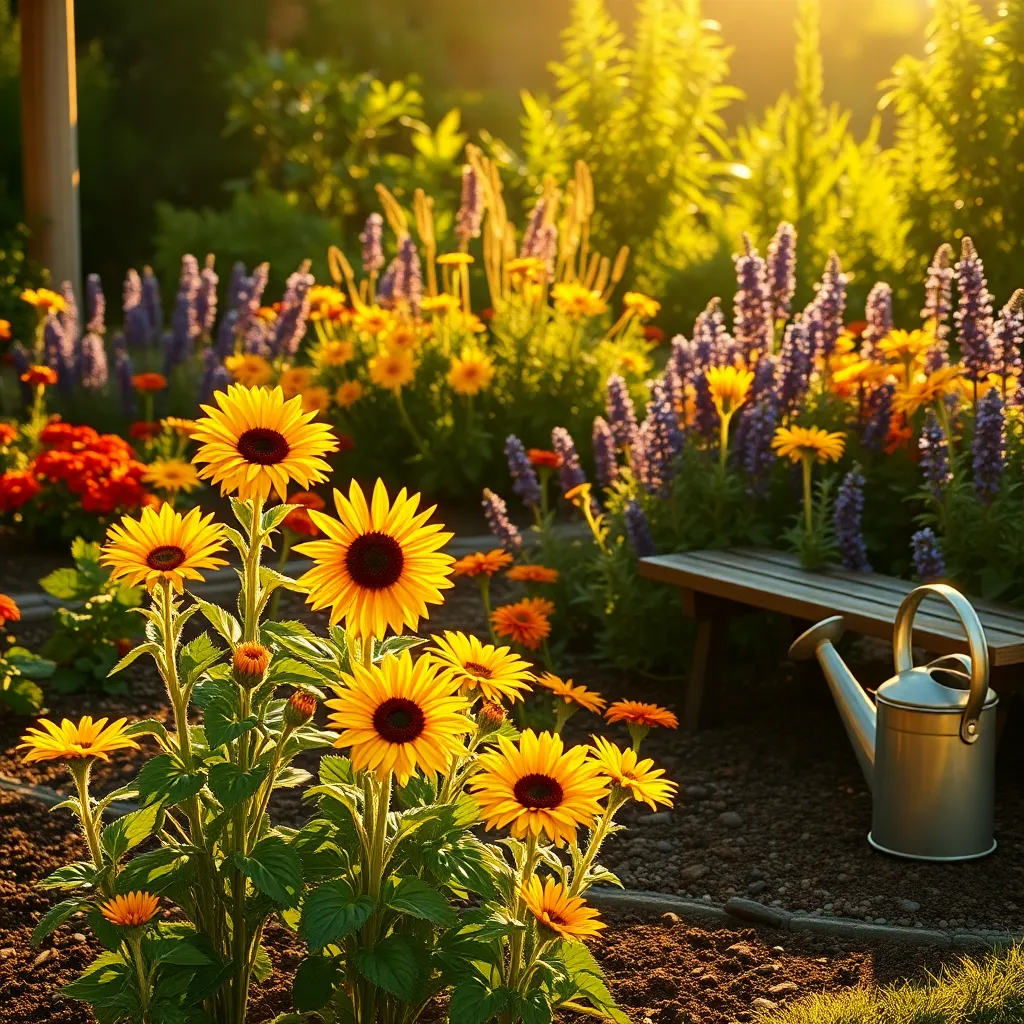
When selecting plants for sunlit areas, choose varieties that thrive in full sunlight. Examples include **lavender, marigold, and sunflowers**, which perform exceptionally well with at least six hours of direct sunlight daily.
To ensure healthy growth, prepare the soil by mixing in organic matter like compost or well-rotted manure. This enhances the soil’s nutrient content, providing the necessary energy for your sun-loving plants to flourish.
Consistent watering is crucial, especially during the hotter months, as sunlit areas can dry out quickly. Aim to water early in the morning to reduce evaporation and allow plants to absorb moisture before the heat of the day.
For more advanced gardeners, consider using **mulch** to help retain moisture and suppress weeds. A 2-3 inch layer of organic mulch, such as bark or straw, will keep the soil cool and maintain consistent moisture levels.
Additionally, monitor your plants regularly for signs of stress, such as wilting or leaf scorch, which can occur if they receive too much sun. If necessary, provide temporary shade using a **garden fabric** to protect delicate plants during extreme heat waves.
Water Consistently and Appropriately
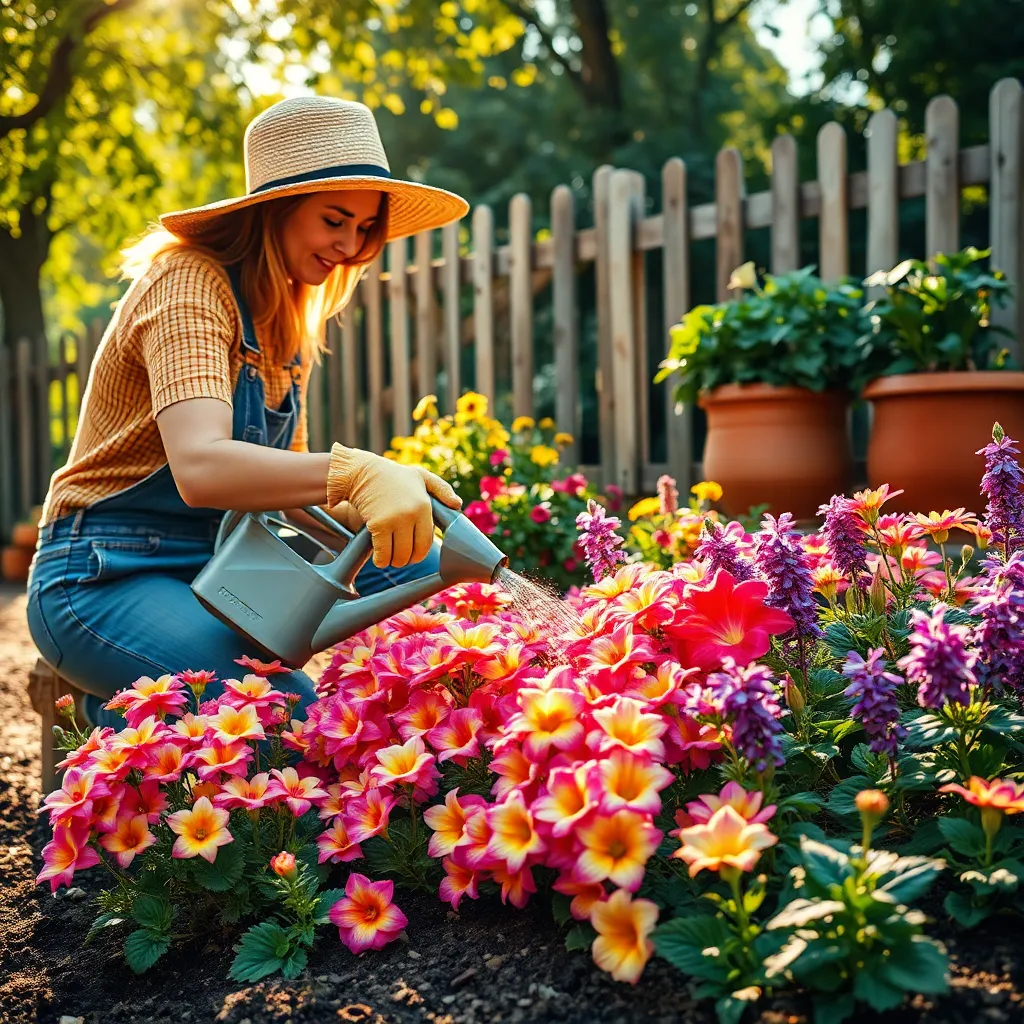
Ensuring your flower garden thrives requires you to water consistently and appropriately. While overwatering can suffocate roots, underwatering can leave your plants thirsty and stressed.
It’s essential to water deeply rather than frequently, allowing moisture to reach the roots. This encourages plants to develop strong, deep root systems that can better withstand dry conditions.
Early morning is the ideal time for watering, as it gives plants time to absorb moisture before the sun evaporates it. This also helps prevent diseases that can thrive in damp, overnight conditions.
Consider the specific needs of your plants, as some varieties, like succulents, require less water than others, such as hydrangeas. A simple soil moisture meter can be a valuable tool to help you gauge when your plants need watering.
For more experienced gardeners, implementing a drip irrigation system can be a great way to ensure consistent moisture levels. This system delivers water directly to the roots, reducing waste and promoting healthier plant growth.
Fertilize and Prune Regularly
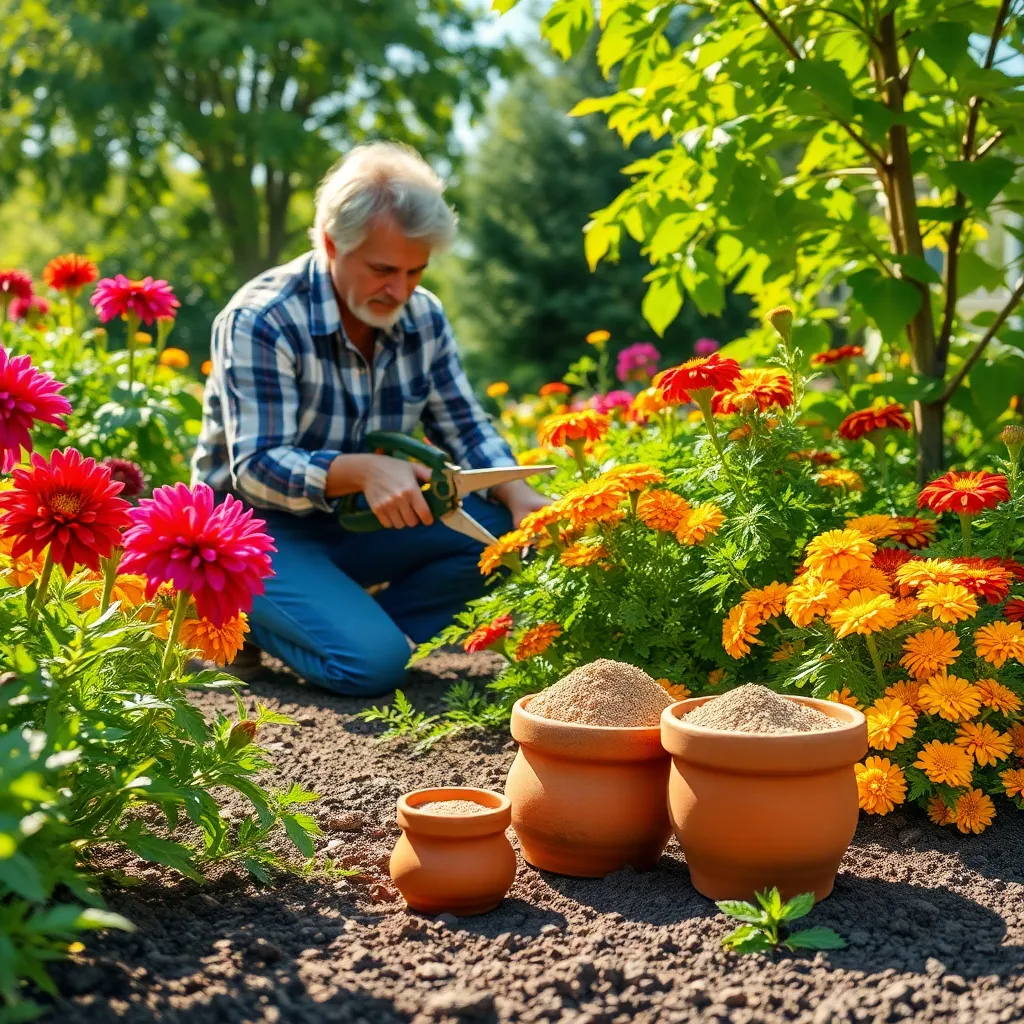
To maintain a vibrant flower garden, regular fertilization is essential. Use a balanced, slow-release fertilizer to provide plants with a steady supply of nutrients throughout the growing season.
Consider applying organic options like compost or well-rotted manure, which improve soil structure and fertility. These not only feed your plants but also enhance the overall health of your garden soil.
Pruning is equally important in keeping your flowers healthy and promoting more blooms. Regularly remove dead or diseased stems to prevent the spread of plant diseases and encourage healthy new growth.
For those new to gardening, start by identifying which parts of your plants need trimming. Generally, you should prune early in the morning or late in the afternoon to avoid stressing your plants during the heat of the day.
Advanced gardeners may want to experiment with techniques like deadheading, which involves removing spent flowers to encourage plants to bloom again. This method is particularly effective for annuals and some perennials, helping to extend the flowering period significantly.
Conclusion: Growing Success with These Plants
In nurturing your relationship, much like tending to a vibrant flower garden, you’ve learned the importance of consistent care, understanding your partner’s unique needs, nurturing growth through effective communication, weathering storms together, and celebrating the blooms of shared accomplishments. Each of these elements plays a vital role in cultivating a flourishing partnership that stands the test of time.
As your actionable next step, take a moment today to express gratitude to your partner for something small they did recently, reinforcing the appreciation that fuels relationships. Remember, little acts of kindness sow the seeds of deep connection and trust.
We encourage you to save or bookmark this article as a handy guide to revisit whenever you need a reminder or a gentle nudge in the right direction. With dedication and love, your relationship can thrive just as beautifully as any garden, promising growth, beauty, and joy.
Embrace these concepts, and look forward to a future filled with shared happiness and success. Your journey to a blossoming relationship begins today—nurture it, cherish it, and watch it grow.

